Plastics plastic pipes: types, features, methods of
What polymers are used in the production of water pipes? Do these plastics have any specific features that a potential buyer should know about? How is a plumbing water pipe installed, how are the connections made? Let's figure it out.

List of materials
It is not too large:
- The plastic black plastic pipe with a blue stripe is polyethylene.
- Along with the usual polyethylene is used crosslinked, characterized by greater heat resistance and mechanical strength. These features of the material due to the fact that the molecular chains in it in the process of processing (crosslinking) form cross-links.
- PVC pipe pipes are used, contrary to popular opinion, not only for the construction of sewage systems, but also for pressure pipelines.
- Finally, polypropylene has settled on the water supply market recently, but seriously and seems to be for a long time.
It is curious: polystyrene pipes reinforced with fiber (chopped fiberglass) or aluminum foil are commonly used for hot water supply and heating. Reinforcement not only increases the tensile strength, but also reduces the rather high thermal expansion of the polymer.
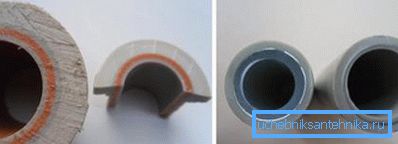
Physical properties
For the convenience of the reader, we bring them into a general table.
| Material | Density, g / cm3 | Softening temperature, C |
| Polyethylene | 0.93-0.96 | 80 |
| Crosslinked polyethylene | 0.95 | 200 |
| Polyvinyl chloride | 1.35-1.43 | 65 |
| Polypropylene | 0.92-0.93 | 130 |
The softening temperatures of polyethylene and PVC unobtrusively hint that these polymers can be used exclusively on cold water. Cross-linked polyethylene and polypropylene can be used for hot water supply and heating.
About the listed materials it is useful to know a few more things.
- Due to the smoothness and manufacturability of production, the price of polyethylene is minimal among all plastics.
- Polyethylene (plain and crosslinked) is elastic. Elasticity is maintained at negative temperatures, so plastic water pipes for drinking PE water do not tear when water freezes.
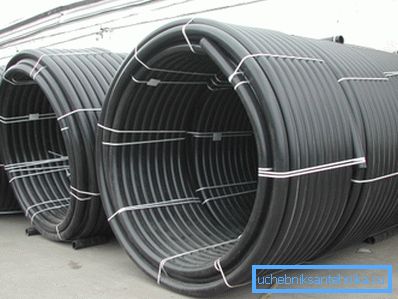
- Depending on the production technology, low, medium and high pressure polyethylene is distinguished (HDPE, PSD and LDPE). Of these, PND is the most durable mechanically; namely it is usually used for the production of pressure pipes.
- Cross-linked polyethylene has a molecular memory: after deformation, it returns to its original shape and size.
- All the listed materials are thermoplastics: when heated, they soften and melt. A variety of crafts from plastics pipes that do not require tight connections can be assembled with your own hands, melting the contacting surfaces and pressing them together.
Nuance: this kind of work with PVC should be done in a well-ventilated area. When heated to 120C, it begins to decompose with the release of caustic hydrogen chloride HCl.
Installation
How to bite off a plastic pipe of the right size? For this purpose, a special miter knife is used, giving a perfectly even cut, strictly perpendicular to the longitudinal axis.
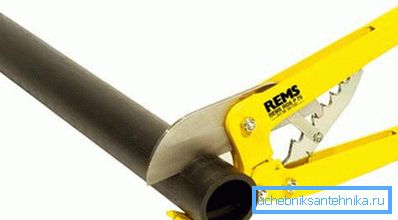
However, if absolutely necessary, you can do without a special tool:
- Cut the pipe with a hacksaw.
- We clean the burrs with a sharp knife. The instruction is relevant for pipes of any type, regardless of the method of their connection: uneven edges with non-removed chamfers will prevent to perform it in any case.
The actual installation methods are different for each type of pipe.
Polyethylene
When the wall thickness is more than 4 mm, polyethylene pressure pipes are butt-welded.
- The ends are pressed against the mirror of the heating element, provided with anti-adhesive coating, and held in this position until reflow.
- Then the mirror is removed, after which the ends are pressed against each other with a specific force of about 1.5 kgf / cm2.
- After solidification of the plastic, the seam is cleaned from the burr (roller of extruded melt).
For welded joints, mechanical or hydraulic devices are usually used to solve the problem of centering pipes, and when large, they also provide the necessary clamping force.
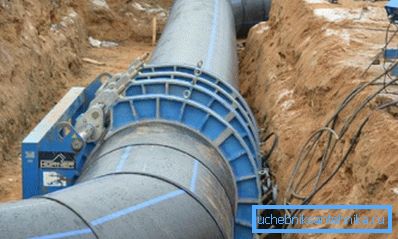
With small pipes, welding is not used; they are connected by compression fittings made of the same polyethylene. Connections are made manually, without tools. The main thing to pay attention to is the correct location of the sealing ring: it is his jam that usually leads to a leak through the fitting.
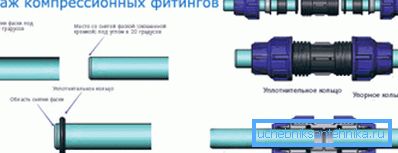
Along with compression, electrically-welded fittings are used. Each of them contains its own heating element - a spiral, which, when 12 volts are applied to the contact terminals, fuses and welds the surfaces of the pipe and fitting.
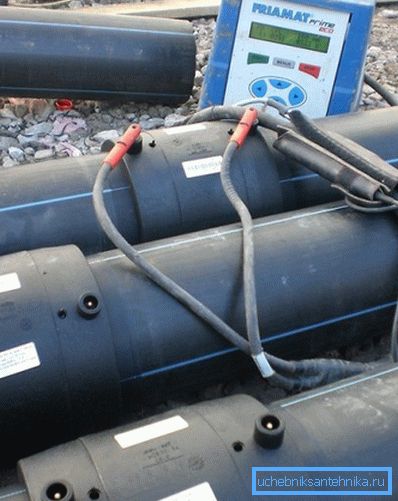
Crosslinked polyethylene
Armature for plastic water pipes made of cross-linked polyethylene uses the already mentioned molecular memory effect. The fitting is a conventional herringbone choke with a fixing sleeve.
How does it connect to the pipe?
- The tip of a special tool, an expander, is inserted at the end of the tube. The tube is stretched and immediately put on the fitting.
- Returning to its original size, it reliably compresses the fitting. The sleeve, which is pushed from above, provides additional insurance: it does not allow the tube to break free even with a strong jerk.

PVC
Polyvinyl chloride pressure pipes are connected in one of two ways - sockets with rubber o-rings and glue.
Flared connections with seals are made exactly as in sewers.
There are a few subtleties here:
- The outer chamfer is removed on the pipe.
- The sealing ring is lubricated with liquid soap for less resistance when docked.
Glue for plastic PVC water pipes is applied to the inner surface of the socket. Then the second pipe is inserted and turned into it to evenly distribute the adhesive, after which the joint remains stationary for several minutes.
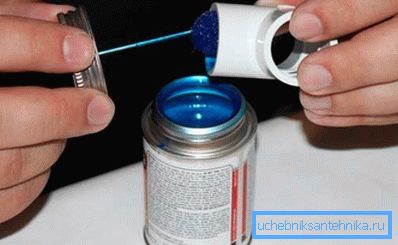
Polypropylene
The method of connecting polypropylene pipes - low-temperature welding. Unlike welding of polyethylene, the pipes here are connected with socket fittings.
The technology in brief is as follows:
- The soldering iron is supplied with a nozzle of the appropriate size and warms up to 240 - 260 degrees.
- In one side of the nozzle, fitted with a bell, a pipe is inserted with the outer chamfer removed. The fitting is put on the second one.
- Melted parts are combined progressively, without turns, movement and fixed for some time.
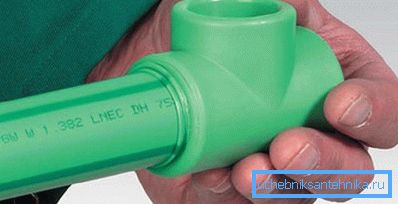
Curiously: fittings for polypropylene are noticeably cheaper than any others because of the simplicity of their design. The notorious homemade products from plastic water pipes are usually assembled with their use: it is much easier to buy a few corners and tees than to look for some alternative connection methods.
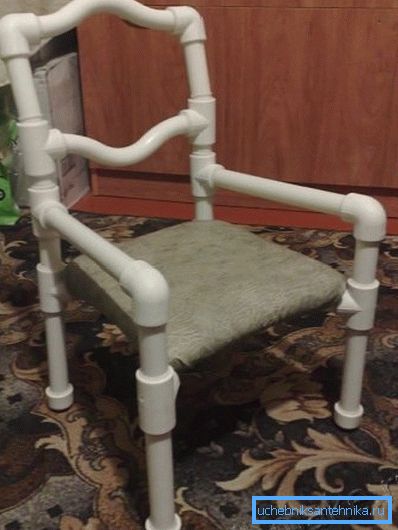
The ends of aluminum-reinforced pipes are pre-cleaned of foil: once in the field of welding, it will reduce the reliability of the connection. For stripping using an uncomplicated hand tool - the shaver.
Conclusion
We hope that our brief insight will be useful to the reader in choosing the best solutions for their own projects. Additional materials can be studied by viewing the video in this article.
Successes!